A Rose Colored Blush Pops From A Bib Placed Below The Throat On A Bird Wearing A Prominent Busy Crest!
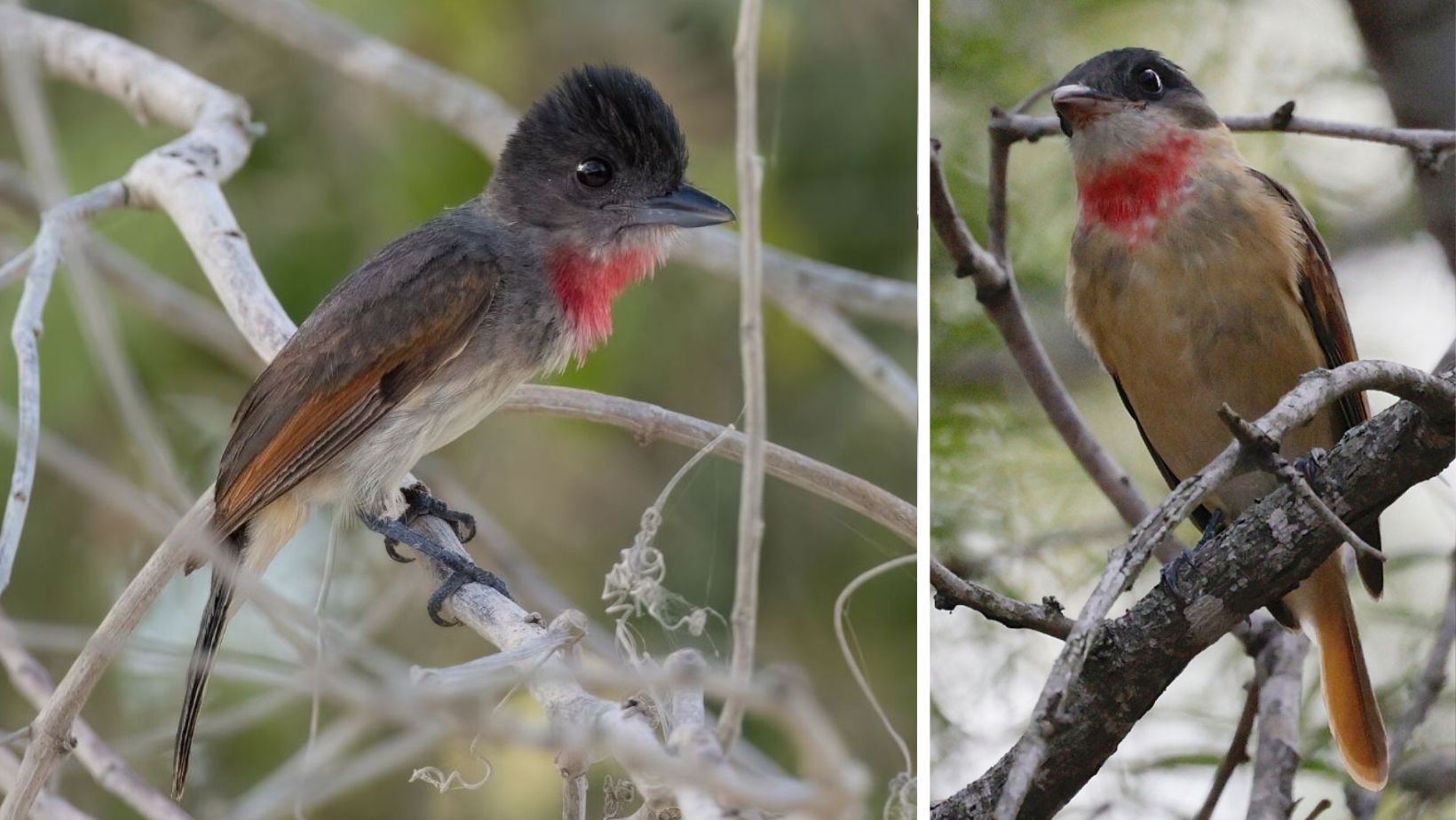
A robust bird with a substantial head wearing a rose-colored bib and a prominent bushy crest.
Meet the Rose-throated becard:
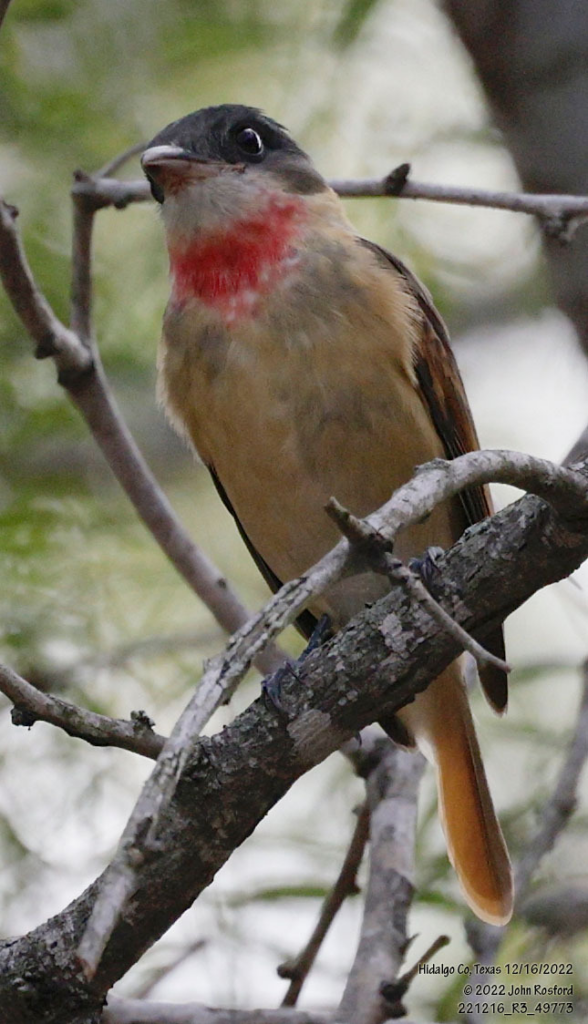
Description: The rose-throated becard (Pachyramphus aglaiae) is a medium-sized bird belonging to the family Tityridae. Adult males feature a distinctive rose-colored neck bib, with overall gray plumage and a darker upperside. Interestingly the pink throat patch absent in darkest rainforest birds. Their usual call is described as a mournful “seeeeuuuwww.”

Females are primarily brown with a rusty upper side and pale underside, lacking males’ striking colors, but always have bushy blackish cap.
Related reading:
– Striking In Every Respect, This Bird’s Most Intriguing Feature Has To Be The Subtle Pink Wash On The Belly Along With A Hot Pink Mask!
Young male looks like female with variable pink on throat.
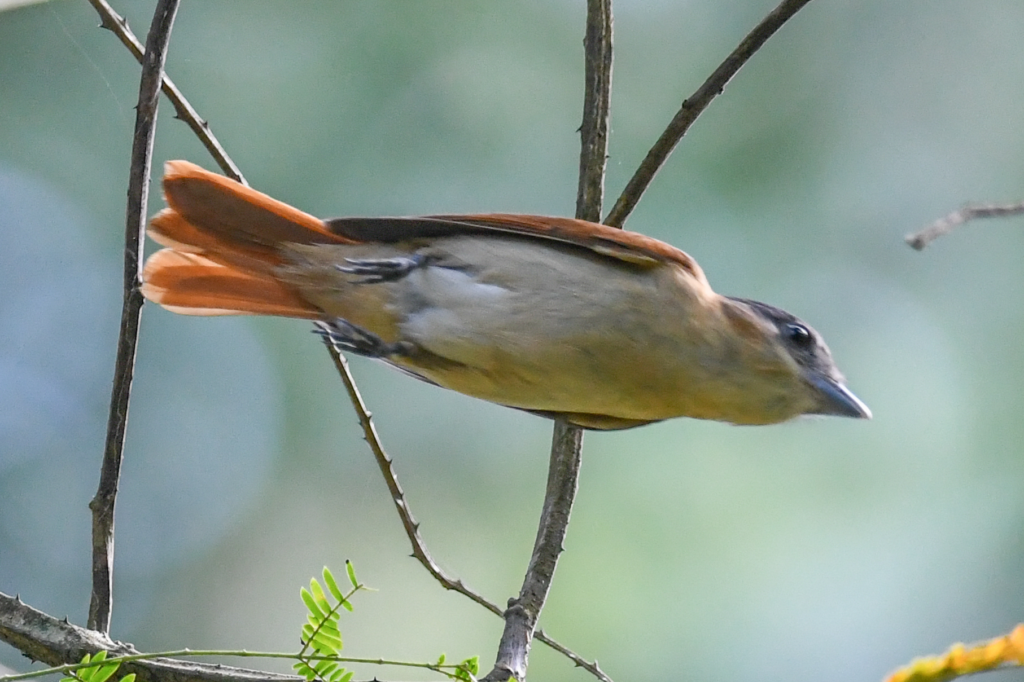
Distribution: They breed from southeastern Arizona and southern Texas to western Panama. While breeding is sporadic in the US, it is more consistent in Mexico. Although mostly permanent residents, individuals in the United States migrate for the winter.
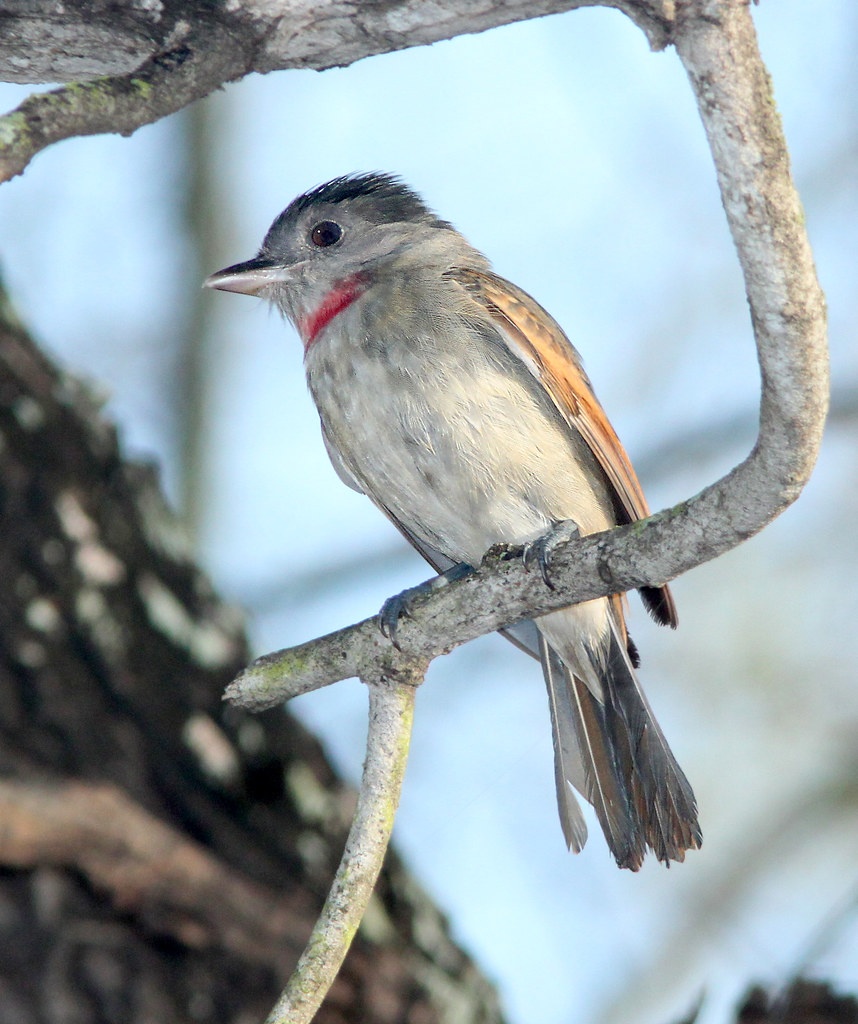
Habitat: Rose-throated becards are typically found in riparian areas within pine-oak woodlands and evergreen forests.
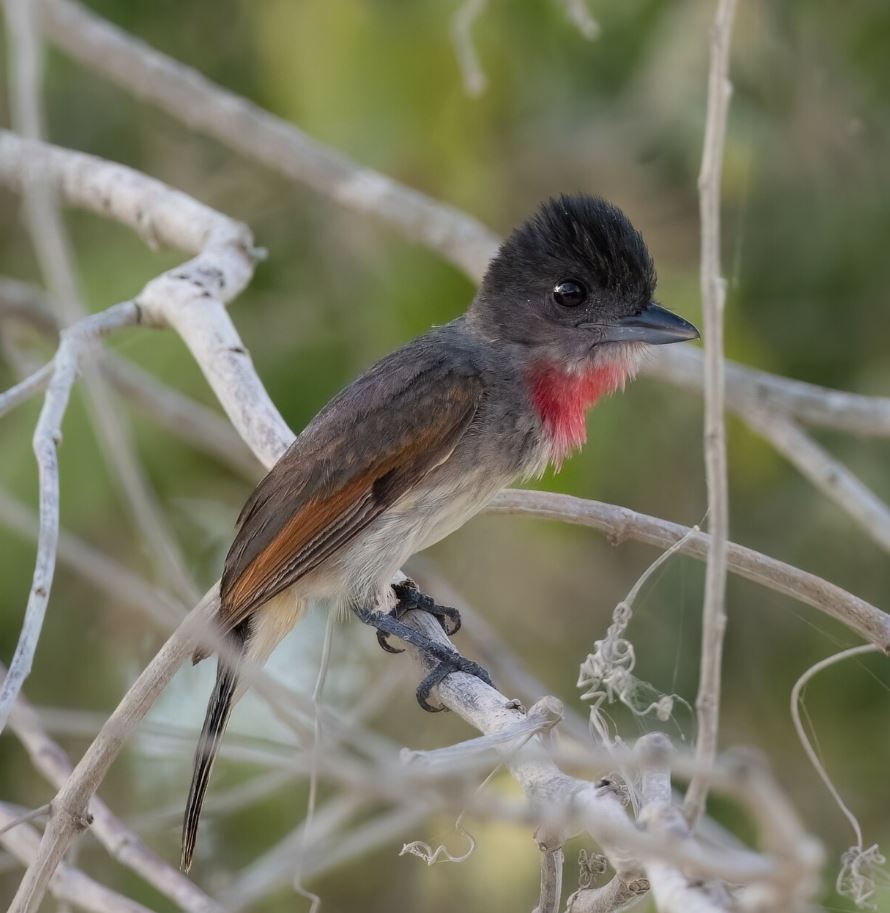
Feeding: Rose-throated becards primarily feed on insects, foraging in vegetation and capturing prey in flight. They also consume berries and seeds.
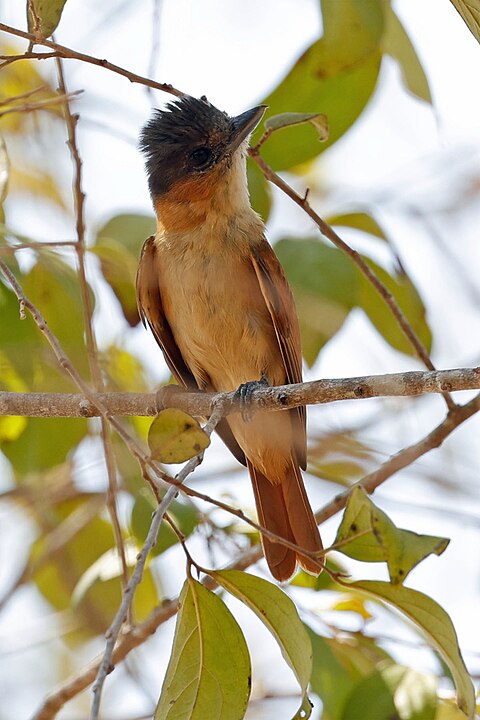
Breeding occurs mainly from May to July, with the nesting season potentially delayed at higher elevations. They construct domed, pendulous nests suspended from high tree branches. Clutch sizes range from three to six eggs, displaying variation in color and marking.
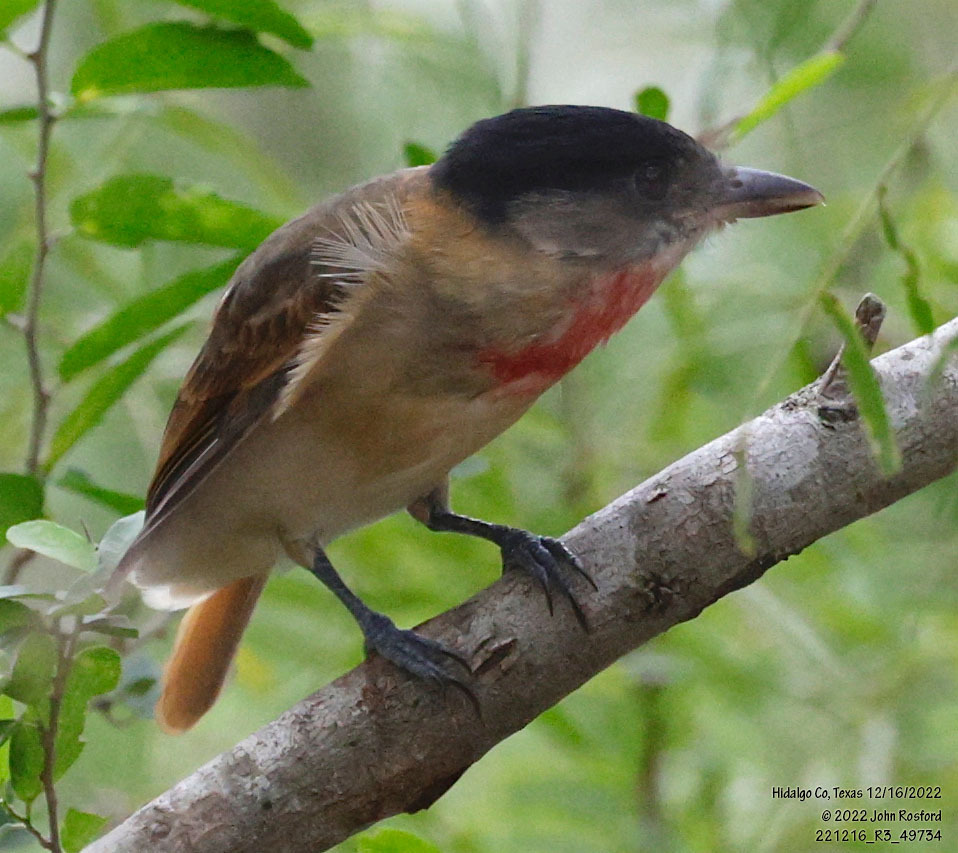
Status: Considered abundant within their range, rose-throated becards are classified as a species of least concern. However, their population status at the periphery of their range is uncertain, with declines attributed to human activities.
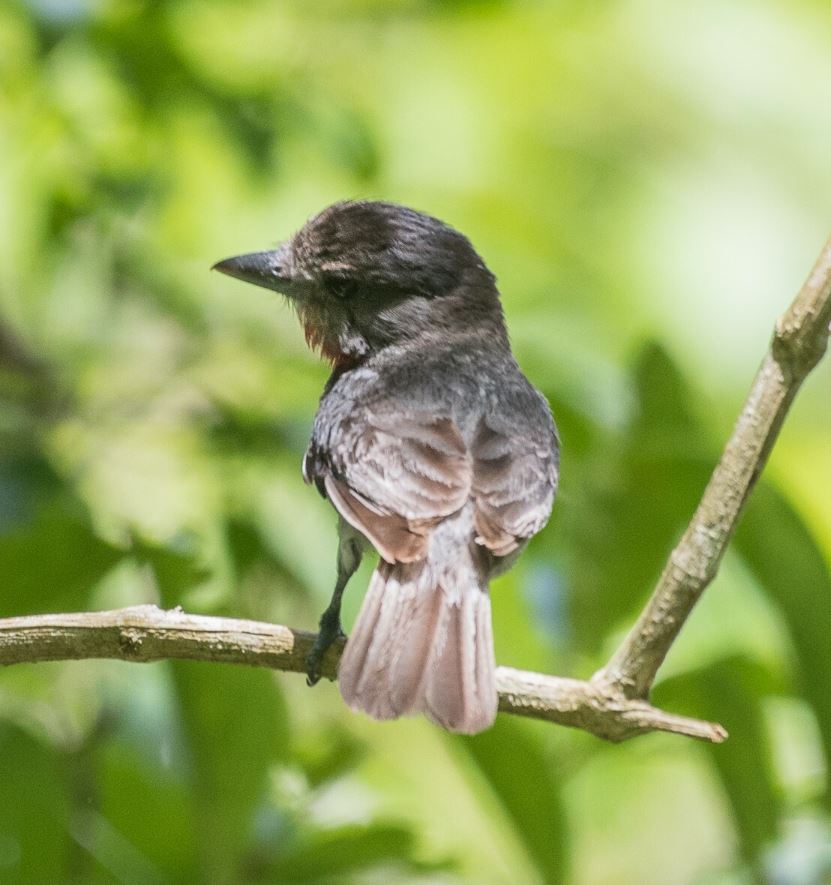
Watch this bird next:
This article uses material from Wikipedia.org which is licensed under the GNU Free Documentation License via Copyright Wikipedia. Images on this page are the sole property of the photographers (unless marked as Public Domain). Please read the license and or contact the photographers directly before using them for any purpose. Thank you all.
This Multifaceted, Shimmering Flying Emerald, Is Nothing Short Of A Brilliant Flying Gem!
Please SHARE this article with all your bird-loving friends and family.






